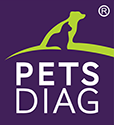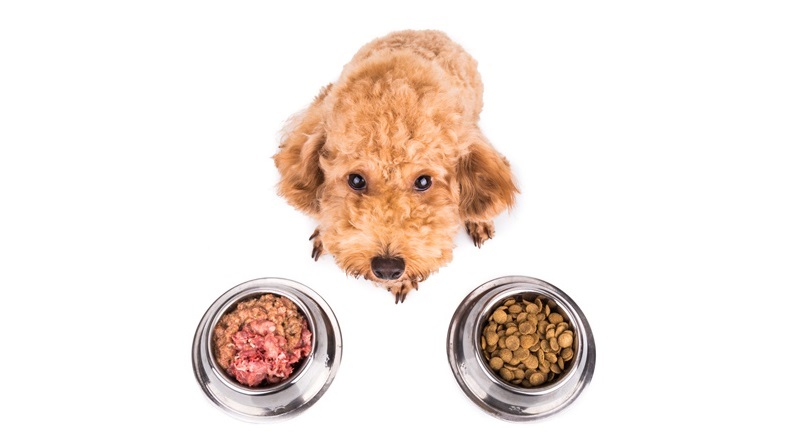Minerals are essential for optimum health for all living species. Requirements differ from one species to the next, but they all need adequate amounts of each mineral for healthy bodily functions. Mineral deficiencies can lead to disease and so can mineral excesses. So getting the correct amount in the right ratios is the key to optimum health.
Dogs and cats fed often suffer from severe imbalances, because it is impossible to provide all the nutrients required in a man-made form. Animals like people – need to eat healthy food to be in good health.
Symptoms of mineral deficiencies may show up as rough, harsh coat, flaky skin, eating dirt, poor growth, recurring disease, fence chewing, de-barking trees, unhealthy skin, tooth decay and much more.
The most common mineral deficiencies in animals:
Calcium – is required for bones, teeth, muscular and nervous systems and for heart function and blood clotting. It should be provided in the correct balance with magnesium. Diets high in phosphorus require extra calcium to balance this.
Natural sources: bones, bonemeal, powder from egg shells, dairy, broccoli, green vegetables.
Magnesium – Due to modern farming methods this mineral is often lacking from the use of artificial fertilisers and from drinking fluoridated water. It is needed for energy production, for the nervous system, protein synthesis, muscle tone, heart action, bones and many other bodily functions.
Natural sources: green vegetables, brown rice, buckwheat groats, gentil, chickpea, soya.
Phosphorus – Is essential for healthy growth, bones and teeth in balance with calcium and magnesium, for brain and nervous system, carbohydrate metabolism and acid/alkaline balance in the blood.
Natural sources: bones, bonemeal, meat, fish, eggs, dairy.
Potassium – This is also lost due to chemical fertilisers, and excess salinity in the soil. Maintains acid/alkaline balance in blood, assists heart action, hormone production, muscle contraction, kidney function & the nervous system.
Natural sources: potatoes (freshly cooked), tomato paste, meat, meat-bone pulp, soy, green peas, parsley, brown rice, broccoli, bananas, eggs.
Sodium – Most commercial foods contain salt (sodium chloride), excess common salt depletes potassium levels. Deficiency is rare, but it is still an important mineral in a natural form. It is needed in correct balance with potassium and chlorine for electrolyte balance, regulation of body fluids, gastric acid and the transportation of nutrients in the blood.
Natural sources: meat, fish, dairy, tomatoes.
Chlorine – Is essential for production of hydrochloric acid in the stomach, protein digestion, liver function and mineral assimilation.
Natural sources: rock salt, asparagus, pineapple.
Sulphur – This mineral is essential for the skin, hair and nails. It is also a good blood cleanser and antiseptic. Animals that are deficient in sulphur generally suffer from lice, fleas and other external parasites.
Natural sources: meat, giblets, eggs, dairy, cauliflower, broccoli.
Copper – Necessary for the absorption of iron, protein metabolism, bones, nerves, brain, connective tissue and skin. Poor coat colour may be a sign of copper deficiency. Dark coloured animals require more copper than light coloured animals. Protects against internal parasites. Many cases of anaemia are due to inadequate copper levels rather than iron deficiency itself.
Natural sources: giblets, parsley, green peas and other green vegetables.
Iron – For healthy red blood cells, it is the oxygen carrier of the blood. Adequate copper, folic acid, vitamin E and vitamin C are necessary for iron absorption.
Natural sources: red meat, giblets, fish, egg yolk, parsley and other green leafy vegetables.
Boron – Needed for assimilation of calcium and magnesium. It is needed only in small amounts and an excess is toxic. Artificial fertilisers cause imbalances of this mineral in the soil. Creaking joints may be a symptom of boron deficiency.
Natural sources include: apples, pears, dried dates and mackerel, eggs.
Iodine – This is essential for healthy thyroid function & skin. Excess causes similar symptoms to deficiency. Excessive feeding of lucerne, clover or soybeans may lead to iodine deficiency.
Natural sources: fish, egg yolk, broccoli.
Cobalt – Deficiency is rare, but symptoms may include cold ears, lack of appetite, susceptibility to cold and unwillingness to move. Anaemia may result.
Natural sources: green vegetables, dairy products, meat and giblets.
Selenium – Is needed for healthy growth, muscles and fertility. It is also an antioxidant, assists liver regeneration, slows ageing and protects against mercury poisoning. It is destroyed by cooking and food processing and chemical fertilisers.
Natural sources: giblets, fish, algae, dairy products, eggs, most vegetables.
Zinc – Is necessary for healthy reproductive function in both males and females. It also assists enzymatic processes, formation of RNA and DNA, wound healing, prostate gland, immune function, healthy eyes and skin. Long term use of steroid, penicillin or diuretic drugs increases the requirement for zinc. High protein or grain diets also decrease the availability of zinc absorption. Zinc is required for proper utilisation of vitamin A. Excess zinc inhibits the absorption of copper and can lead to copper deficient anaemia.
Natural sources: giblets, chicken, fish, grits, green leafy vegetables.
Manganese – Is necessary for protein, carbohydrate and fat metabolism. Nourishes nerves, brain, muscles, bone and cartilage. Reproductive system, immune system and pituitary gland.
Natural sources: eggs, green leafy vegetables, porridge, brown rice, dried apricots.
Silica – For strong bones, teeth, hair, nails immunity and respiratory system.
Natural sources: apples, beets, cereal, asparagus, green beans.
Fluorine – Essential for strong bones and teeth, and protects against infection.
Natural sources: dairy products, carrots, apples, lettuce naturally hard water.
Chromium – Is a co-factor with insulin in removing glucose from the blood.
Natural sources: grits, broccoli, meat, fish, liver, eggs.
Some of the natural sources relevant to the health of the dog’s elements are listed above. Supplementing the deficiencies of ingredients with the help of diets, using dose components, may prove to be insufficient and require additional mineral and vitamin supplementation.
The best way to find out if your dog has a mineral disorder, is the elemental hair analysis for animals EHAA. This is the most accurate way to test the concentrations of elements in body tissues.
Remember that prevention is much easier than treatment. By providing your dog with effective prophylaxis, you can protect him against many dangerous diseases.
https://www.greenpet.com.au/minerals-for-healthy-animals/ (31.01.2018)










